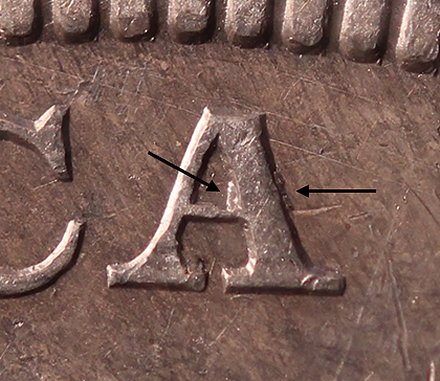|
|
Comments: This die marriage is unconfirmed. The obverse die is unknown. 1840 Reverse PA was used for almost all original proofs through 1854. |
Numerous references, including Breen (reference 7) and Bowers (reference 4) have claimed that two different proof die marriages were struck in 1846, using two different obverse dies, each paired with the reverse used for almost all original proof issues through 1854 (Breen is silent on the reverse pairing). The frequently seen proof die pairing exhibits a strongly repunched date. We have not been able to confirm the existence of the second proof die marriage, which is purported to exhibit a date that ISN’T repunched. The only example found in the Heritage archives is an example of die marriage OC-1, in an NGC PR62 holder, which we suspect is a business strike struck just after the obverse 1 die was polished to remove evidence of clash marks and die cracks. It’s possible that the OC-P2 die pairing does exist, so we’ve left a place for it in our variety listing. |
If this die marriage exists, the reverse die is probably our 1840 PA. We’ve made that assumption, but it might change if we are able to find an example. 1840 PA is the same die used for almost all original proofs issued from 1840 through 1854. This die exhibits unique features on A3. The following photo shows these die markers, possibly created by die rust or just die crumbling due to imperfect die metal. These allow easy identification of the proof die, even on mishandled or lightly circulated examples.  Reverse 1840 PA defects in A3
|
| Photo credits:
Reverse 1840 PA: 1846 PCGS PR58, from the Osburn-Cushing reference collection. |
